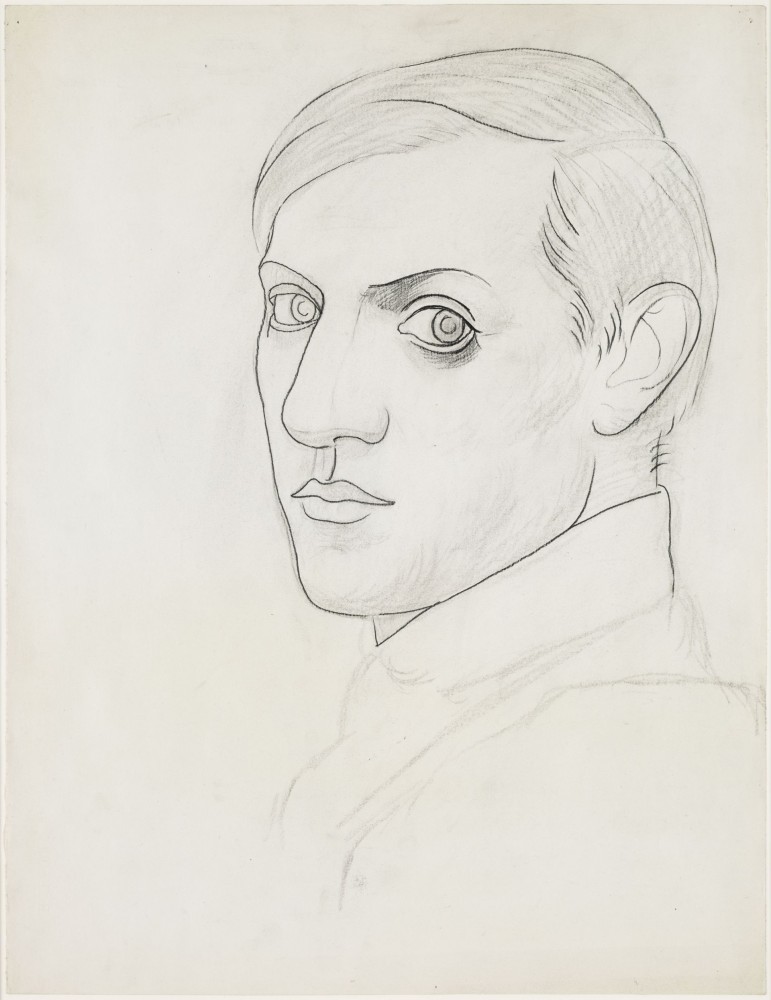
Self-portrait, Montrouge, 1918. Pablo Picasso (Spanish, 1881–1973). Graphite and charcoal on wove paper; 64.2 x 49.4 cm. Musée national Picasso-Paris, Pablo Picasso gift in lieu, 1979. MP794. Photo © RMN-Grand Palais (Musée national Picasso-Paris) / Mathieu Rabeau. © 2024 Estate of Pablo Picasso / Artists Rights Society (ARS), New York
The long-anticipated exhibition at the Cleveland Museum of Art (CMA), Picasso and Paper, offers a groundbreaking new look at Pablo Picasso’s lifelong experimentation with paper. Opening Sunday, December 8, 2024, and on display through March 23, 2025, in both the Kelvin and Eleanor Smith Foundation Exhibition Hall and Gallery spaces, Picasso and Paper showcases nearly 300 works spanning Picasso’s almost eight-decade career.
The artist’s diverse use of paper is the subject of this blockbuster exhibition, which was organized by the Cleveland Museum of Art and the Royal Academy of Arts, London, in partnership with the Musée national Picasso-Paris. From expressive prints and drawings to colossal collages, Picasso’s works on and with paper showcase his extraordinary capacity to innovate and reinvent himself using a material with limitless possibilities. These are juxtaposed with some of the artist’s celebrated paintings on canvas and bronze sculpture.
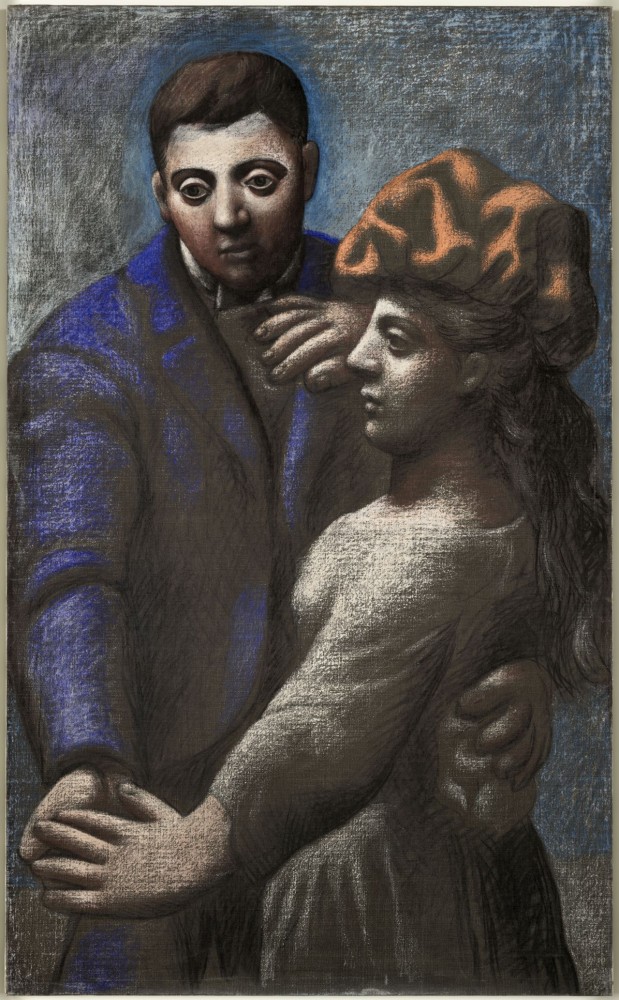
The Village Dance, c. 1922. Pablo Picasso (Spanish, 1881–1973). Pastel and oil on canvas; 139.5 x 85.5 cm. Musée national Picasso-Paris, Pablo Picasso Gift in Lieu, 1979. © 2024 Estate of Pablo Picasso / Artists Rights Society (ARS), New York
“To create the innovative works for which he is remembered today, Picasso returned again and again to paper, ultimately producing thousands of prints and drawings,” said Britany Salsbury, CMA curator of prints and drawings. “We’re excited to be able to feature these works alongside experimental paper cutouts, Cubist collages, and even torn and burned shapes created for his closest friends. Together, the artworks in Picasso and Paper offer an opportunity to see the artist at his most radical. They also allow us to better understand the collaborative relationships—with printers, publishers, dealers, models, and partners—that contributed to his canonical reputation.”
The exhibition opens with paper cutouts made by Picasso at the age of nine, then proceeds chronologically, covering his long, rich career. Endlessly fascinated with new and varied types of paper, Picasso used traditional materials, but also others that were unusual, including mass-produced wallpapers and daily newspapers.
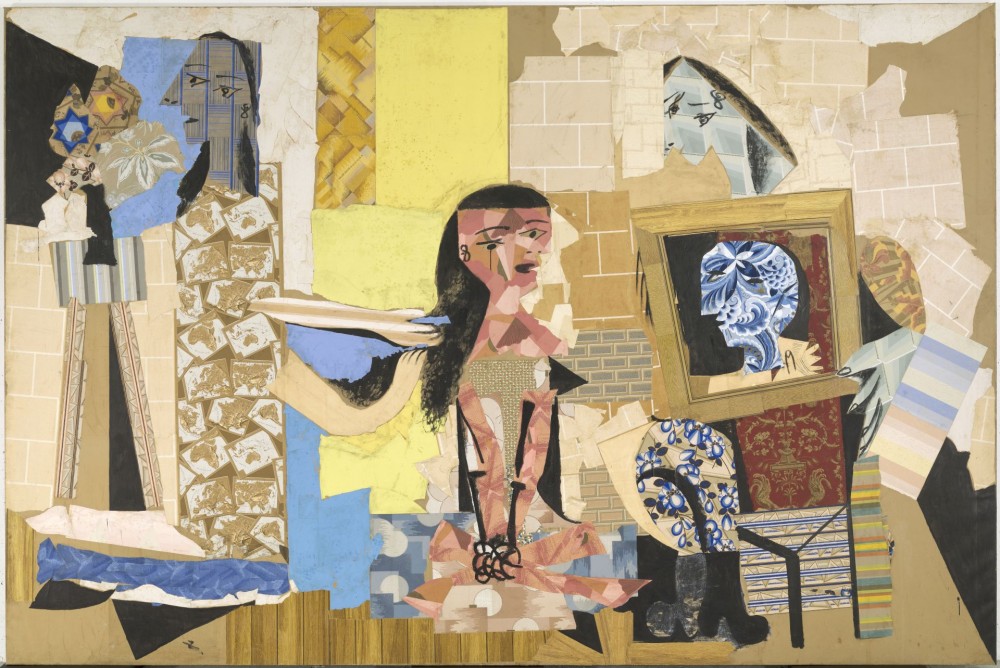
Women at Their Toilette, Paris, winter 1937–38. Pablo Picasso (Spanish, 1881–1973). Cut wallpapers with gouache on paper pasted onto canvas; 299 x 448 cm. Musée national Picasso-Paris, Pablo Picasso Gift in Lieu, 1979. MP176. Photo © RMN-Grand Palais (Musée national Picasso-Paris) / Adrien Didierjean. © 2024 Estate of Pablo Picasso / Artists Rights Society (ARS), New York
The numerous highlights in Picasso and Paper include Women at Their Toilette (1937–38), an extraordinarily large collage (9 13/16 x 14 1/2 feet) of cut-and-pasted papers, exhibited for the first time in the United States; other rarely seen Cubist collages; the artist’s private sketchbooks, including studies for his best-known paintings; constructed paper guitars from the Cubist and Surrealist periods; prints that reveal Picasso’s complex working process; and an array of works related to the artist’s most celebrated paintings and sculptural projects.
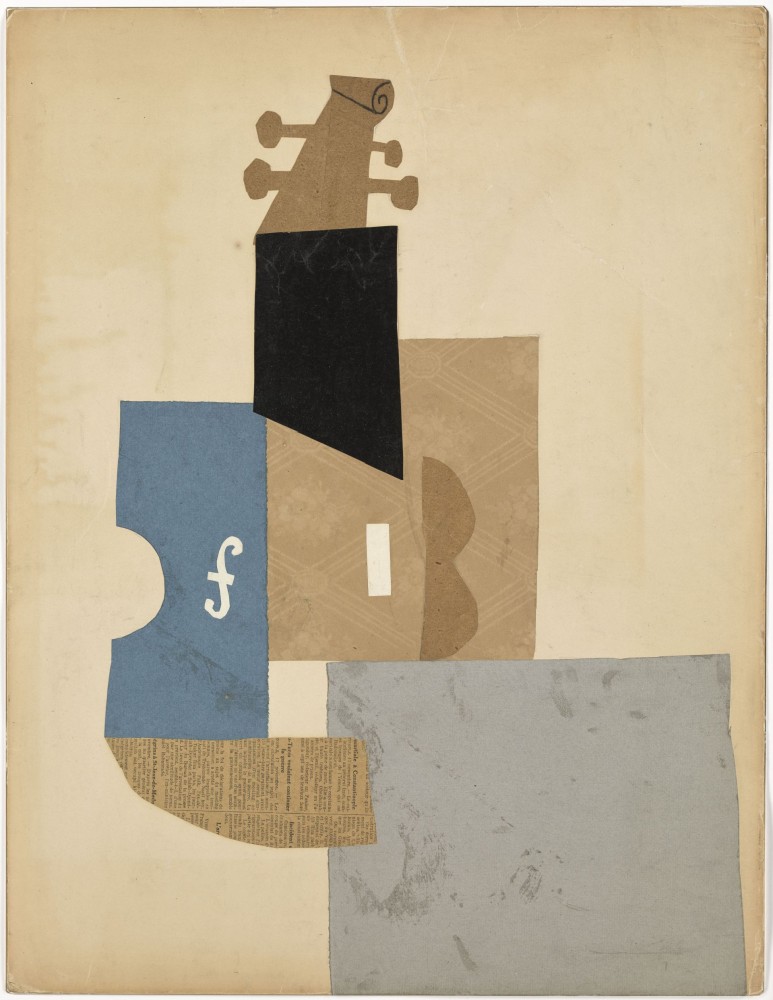
Violin, Paris, fall 1912. Pablo Picasso (Spanish, 1881–1973). Laid paper, wallpaper, newspaper, wove wrapping paper, and glazed black wove paper, cut and pasted onto cardboard, with graphite and charcoal; 65 x 50 cm. Musée national Picasso-Paris, Pablo Picasso Gift in Lieu, 1979. MP367. Photo © RMN-Grand Palais (Musée national Picasso-Paris) / Mathieu Rabeau. © 2024 Estate of Pablo Picasso / Artists Rights Society (ARS), New York
“Paper offered Picasso an intimate space in which he could not only respond to events in his personal life and in the world around him, but also carry out formal experimentation,” said Salsbury. “Picasso and Paper traces some of the most significant shifts in modern art through his practice and features rarely seen artworks from the most internationally significant holdings of his work.”

Gallery views of Picasso and Paper at the Cleveland Museum of Art
The exhibition also includes the CMA’s La Vie (1903), from Picasso’s Blue Period, featured with preparatory drawings and other works on paper exploring corresponding themes. In the Cubist section, Picasso’s bronze Head of a Woman (Fernande) (1909) (Musée national Picasso-Paris) will be surrounded by a large group of related drawings. Seen together, these groupings highlight the connections that Picasso saw between media, his fascination with the materials that he worked with, and the integral role that paper played throughout his artistic practice. Picasso and Paper was originally scheduled to open at the CMA in September 2020 but was delayed due to the global pandemic.

Gallery views of Picasso and Paper at the Cleveland Museum of Art
“We are eager to share Picasso and Paper at its only North American venue,” said William M. Griswold, director and president of the Cleveland Museum of Art. “This exhibition offers an opportunity for visitors to better understand Picasso and his influence on modern art, or for those already familiar with the artist to see him in an entirely new light. The innovative focus of this exhibition allows for numerous surprises and encourages us to see Picasso’s genius in a new and thought-provoking way.”
For more details about reserving tickets for Picasso and Paper visit:
https://www.clevelandart.org/exhibitions/picasso-and-paper
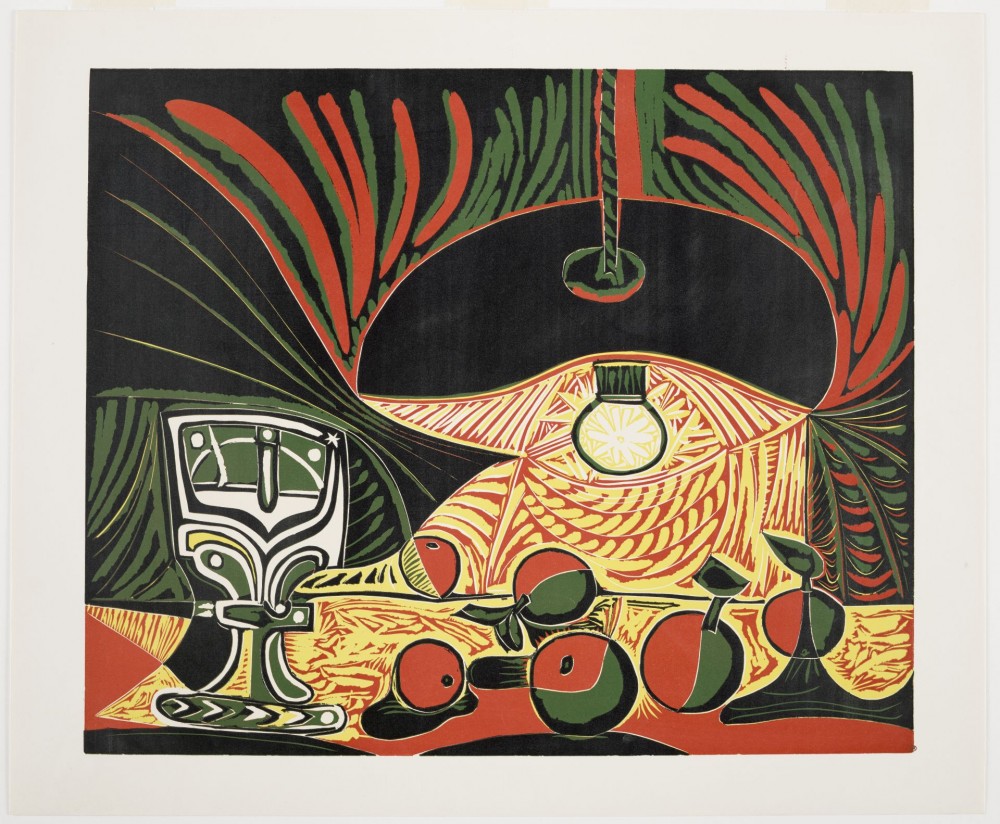
Still Life Under a Lamp, 1962. Pablo Picasso (Spanish, 1881–1973). Color linocut on wove paper; 53.1 x 64 cm. The Cleveland Museum of Art, John L. Severance Fund, 1984.61. © 2024 Estate of Pablo Picasso / Artists Rights Society (ARS), New York
Exhibition Catalogue
Picasso and Paper is accompanied by a fully illustrated catalogue published by the Royal Academy of Arts. It features essays by distinguished Picasso scholars and leading authorities in various aspects of technical art history, including William H. Robinson, formerly of the Cleveland Museum of Art; Ann Dumas of the Royal Academy of Arts; Emilia Philippot of the Musée national Picasso-Paris; and Claustre Rafart Planas of the Museu Picasso, Barcelona. Specific aspects of Picasso’s engagement with paper are addressed by Christopher Lloyd, an expert on Picasso’s drawings; Stephen Coppel, curator of prints and drawings at the British Museum; Violette Andres, photography curator at the Musée national Picasso-Paris; Johan Popelard of the University of Paris; and Emmanuelle Hincelin, a paper conservator with scientific expertise in the types of paper Picasso used at key moments in his career.
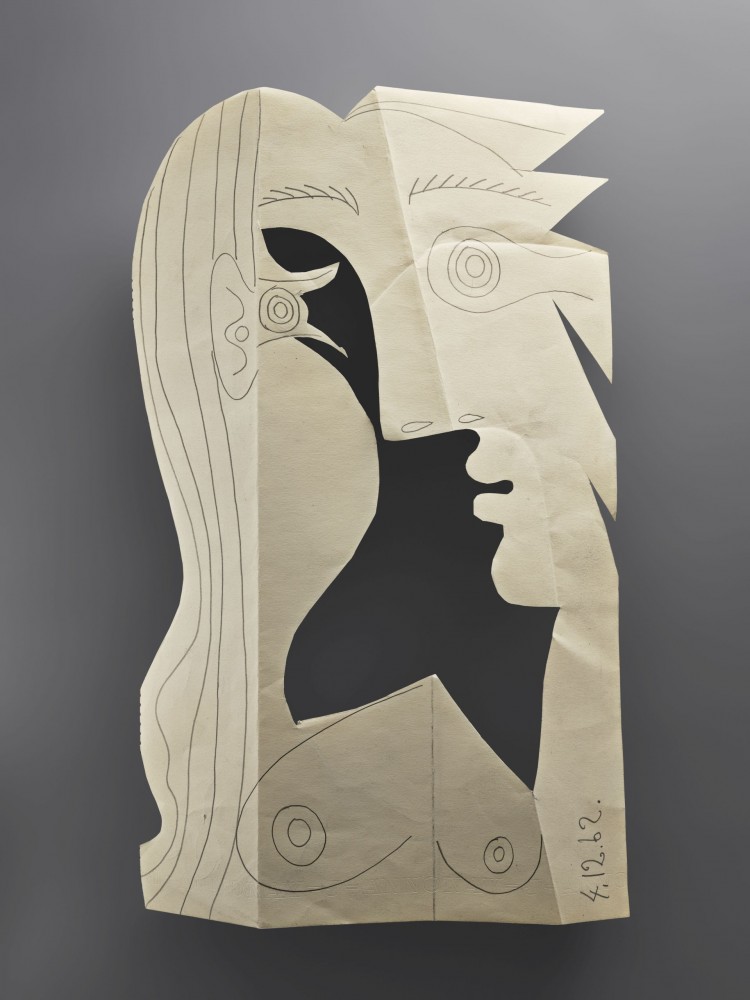
Head of a Woman, Mougins, December 4, 1962. Pablo Picasso (Spanish, 1881–1973). Graphite on folded paper cutout; 42 x 26.5 cm. Musée national Picasso-Paris, Pablo Picasso Gift in Lieu, 1979. MP1850. Photo © RMN-Grand Palais (Musée national Picasso-Paris) / Béatrice Hatala. © 2024 Estate of Pablo Picasso / Artists Rights Society (ARS), New York

This exhibition is presented by CIBC.

Major support is provided by Anne H. Weil. Generous support is provided by the Carol Yellig Family Fund. Additional support is provided by Carl M. Jenks and Frank and Fran Porter.
This exhibition is supported by an indemnity from the Federal Council on the Arts and the Humanities.
All exhibitions at the Cleveland Museum of Art are underwritten by the CMA Fund for Exhibitions. Principal annual support is provided by Michael Frank and the late Pat Snyder, the Kelvin and Eleanor Smith Foundation, the John and Jeanette Walton Exhibition Fund, and Margaret and Loyal Wilson. Major annual support is provided by the late Dick Blum and Harriet Warm and the Frankino-Dodero Family Fund for Exhibitions Endowment. Generous annual support is provided by two anonymous donors, Gini and Randy Barbato, Gary and Katy Brahler, Cynthia and Dale Brogan, Dr. Ben and Julia Brouhard, Brenda and Marshall Brown, Gail and Bill Calfee, Joseph and Susan Corsaro, Richard and Dian Disantis, the Jeffery Wallace Ellis Trust in memory of Lloyd H. Ellis Jr., Leigh and Andy Fabens, Florence Kahane Goodman, Janice Hammond and Edward Hemmelgarn, Robin Heiser, the late Marta and the late Donald M. Jack Jr., Eva and Rudolf Linnebach, the William S. Lipscomb Fund, Bill and Joyce Litzler, the Roy Minoff Family Fund, Lu Anne and the late Carl Morrison, Jeffrey Mostade and Eric Nilson and Varun Shetty, Tim O’Brien and Breck Platner, William J. and Katherine T. O’Neill, Henry Ott-Hansen, Christine Fae Powell, Michael and Cindy Resch, William Roj and Mary Lynn Durham, Betty T. and David M. Schneider, Saundra K. Stemen, Paula and Eugene Stevens, the Womens Council of the Cleveland Museum of Art, and Claudia Woods and David Osage.
All education programs at the Cleveland Museum of Art are underwritten by the CMA Fund for Education. Major annual support is provided by Brenda and Marshall Brown, Mr. and Mrs. Walter E. Fortney, David and Robin Gunning, Dieter and Susan M. Kaesgen, Eva and Rudolf Linnebach, Gail C. and Elliott L. Schlang, Shurtape Technologies, and the Kelvin and Eleanor Smith Foundation. Generous annual support is provided by Gini and Randy Barbato, the M. E. and F. J. Callahan Foundation, Char and Chuck Fowler, the Giant Eagle Foundation, Robin Heiser, the late Marta and the late Donald M. Jack Jr., Bill and Joyce Litzler, the Logsdon Family Fund for Education, William J. and Katherine T. O’Neill, Betty T. and David M. Schneider, the Sally and Larry Sears Fund for Education Endowment, Roy Smith, Paula and Eugene Stevens, the Trilling Family Foundation, and the Womens Council of the Cleveland Museum of Art.
###
About the Cleveland Museum of Art
The Cleveland Museum of Art is renowned for the quality and breadth of its collection, which includes more than 63,000 artworks and spans 6,000 years of achievement in the arts. The museum is a significant international forum for exhibitions, scholarship, and performing arts and is a leader in digital innovations. One of the top comprehensive art museums in the nation, recognized for its award-winning open access program and free of charge to all, the Cleveland Museum of Art is located in the University Circle neighborhood.

